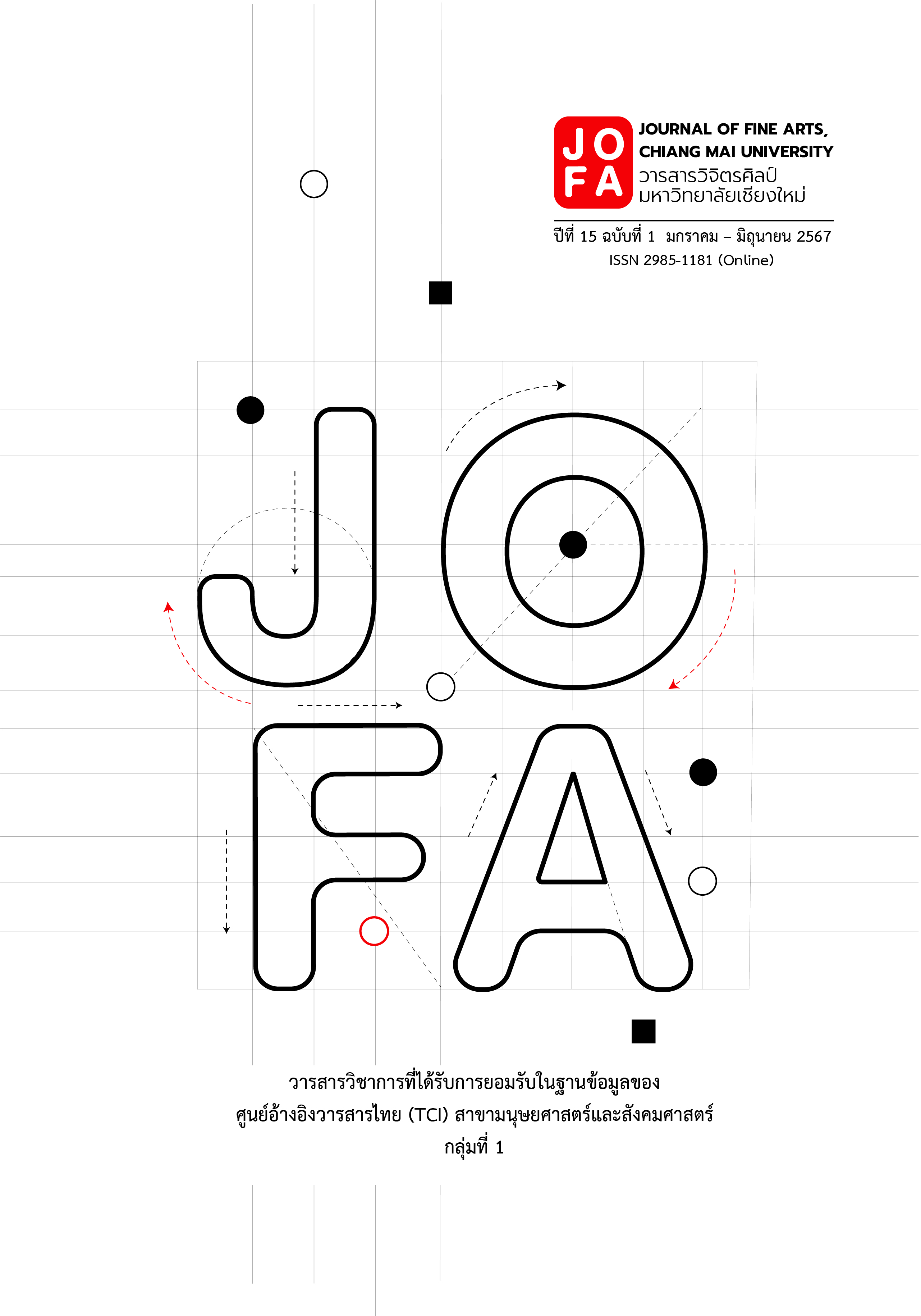Developing a Unique Pattern, the Pattern Displayed on the Sino-Portuguese Building is a Batik-Painted Pattern as a Souvenir Product in Phuket
Main Article Content
Abstract
The objective of this research was to develop a unique pattern that appeared on the Sino-Portuguese building and applied to paint on batik cloth as a processed product. To design and develop fabric products painted on batik cloth and there are 4 products that are suitable for the uniqueness of the patterns that appear on the Sino-Portuguese building to assess the satisfaction of the processed fabric products by collecting data from a sample of questionnaires of 100 people and evaluating by 3 technicians. To assess the design of the sketch design, the prototypes displayed on the Sino-Portuguese building that convey the uniqueness and the prototyping by expert assessment. Found that the columnar pattern, flower petal and plant leaf pattern. The group of hemispherical halo and rectangular motifs consisted of the 3 flora, the data from the sample group liked the most of the 3 patterns. The 4 patterns and the melt consisted of 4 products: bags, window curtains, pillowcases and bed linens. Then bring the batik fabric to evaluate the results of the work, Skecth Design, the color of the researcher designed a new Batik estimates found that the pattern with the highest average was the 3rd Sino-Portuguese pattern (X̅= 4.62, S.D.=0.4976), followed by the second pattern (X̅= 4.24, S.D.=0.6249). The results of analysis of product design and prototyping by experts assessed that the products of window curtains, pillowcases and bed linens. There is the same level of satisfaction (X̅= 5.00, S.D.=0.00), that is, the Sino-Portuguese (contemporary) pattern is appropriate, unique and beautiful when placed on a batik product as a souvenir in Phuket Province. The results of this research, the researcher expects further academic benefits to students, interested parties and personnel in the batik-making career community in Phuket.
Article Details

This work is licensed under a Creative Commons Attribution-NonCommercial-NoDerivatives 4.0 International License.
References
Burapajatana, J. (2016). Kānphatthanā Phalittaphan Sing Thō̜ Praphēt Khō̜ng Thīralư̄k Khō̜ng Chumchon Bān Hāt Līeo Čhangwat Sukhōthai [Development of Souvenir Textile Products of Ban Had Seao,Sukhothai]. Journal of Art architecture Naresuan University, 7(1), 146.
Kobayashi, S. (1998). khanlœ̄lit [Colorist]. Japan: Kodansha International Ltd.
Kuldamromgwiwat, T. (2000). Praphēt Læ Laksana Rūpbǣp Lūatlāi Bon Phalittaphanbātik Thī Phūsư̄ Læ Theknik Chœ̄ngphānit Nai Kāntham Phā Bātik Nai Čhangwat Phuket [Types and characteristic of ornament batik products and commercial techniques that custom made in batik making in Phuket Province]. Research Report. Phuket: Phuket Rajabhat Institute.
Rojanaudomsat, N. (1993). Kāntham Phā Bātik [Making batik cloth]. Bangkok: O.S. Printing House.
Sujakha, S. (2000). Phư̄a Khwāmkhaočhai Phǣndin Phū Ket [To understand the land of Phuket]. Bangkok: Documentary.
Supaviriyakorn, S. (2008). Kānsāng San Ngān Bātik [Batik creative Art]. Phuket: Faculty of Technology and Environment.
Supaviriyakorn, S. (2012). Rūpbǣp LūatlāI Phā Bātik Nai Klum Čhangwat ʻandāman [Designs on Batik Cloth in Andaman Provinces]. Songkhla Nakarin Journal Social Science and Humanities, 18(4), 187-210.
Sontararachon, D. (1988). KāNʻō̜kbǣp LāI Phim Phā [Fabric print design]. Bangkok: O.S. Printing House.
Silrattana, P. (1988). Khō̜ng Thīralư̄k [Souvenir]. Bangkok: O.S. Printing House.
Tepsing, P. & Wattanasin, W. (2002). LūatlāI toktǣng Nā ʻāKhān Chinō PrōtkīT Nai Čhangwat Phuket [Decorative Ornament on Facade of Sino-Portuguese Building in Phuket Province]. Research report. Songkhla: Prince of Songkla University.


